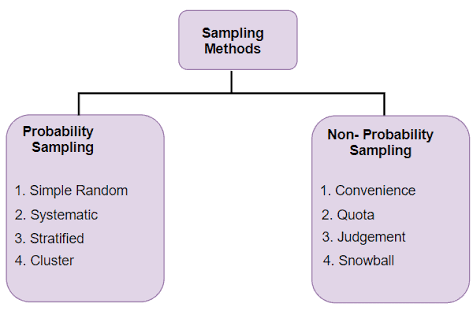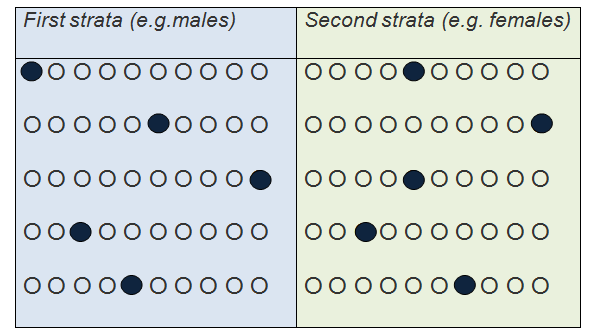

When randomly sampling each stratum, the resulting sample may not be representative of the full population.There is more administration to do to conduct this process, so researchers must include this extra time and order.Researchers may hold prior knowledge of the population’s shared characteristics beforehand, which increases the risk for selection bias when strata are defined.

Having a smaller, more relevant sample to work with means a more manageable and affordable research project.ĭisadvantages of stratified random sampling

Lastly, it helps with efficient and accurate data collection.As participant grouping must be exhaustive and mutually exclusive, stratified random sampling removes variation and the chances of overlap between each stratum.The method is fair for participants as the sample from each stratum can be randomly selected, meaning there is no bias in the process.Stratified random sampling gives you a systematic way of gaining a population sample that takes into account the demographic make-up of the population, which leads to stronger research results.This leads to several advantages and disadvantages: Advantages of stratified random sampling Researchers use stratified random sampling when they are already aware of (or have become aware of) subdivisions within a population that need to be accounted for in their research. Why do researchers use stratified random sampling? This will allow you to carry out a total population analysis. Combine all stratum samples into one representative sample.įor an accurate, representative sample of the entire population, you must combine all stratum examples into one. When done correctly, stratified random sampling will provide a final sample that is exhaustive (each participant of the population must belong to one stratum) and mutually exclusive (where participants don’t overlap with another stratum). Potential sampling methods for random selection include simple random sampling or systematic random sampling. Randomly select from each stratum.Īfter stratifying each member of the population into relevant subsections, you will apply random sampling techniques to randomly select participants from each stratum. It’s important to define the ratio numbers of your sample so it is proportionally representative of the total population (see the FAQ section below for more information). Researchers may or may not already have prior knowledge about a population’s shared characteristics.

their race, gender, nationality, level of education, or age group. Strata are usually created based on the differences between participant’s shared characteristics – e.g. Define the strata needed for your sample. With this in mind, make sure to clearly outline what it is you want to achieve and try out different methods to see which work best for your research.īut for now, where do you start with stratified random sampling? Process - How do you do stratified random sampling? 1. Of course, your choice of sampling technique will depend on your goals, budget, and desired level of accuracy. Stratified random sampling is one of four probability sampling techniques: Simple random sampling, systematic sampling, stratified sampling, and cluster sampling. It allows them to quickly obtain a sample population that best represents the entire population being studied. Stratified random sampling is typically used by researchers when trying to evaluate data from different subgroups or strata. Random samples are then selected from each stratum and can be compared against each other to reach specific conclusions.įor example, a researcher might want to know the correlation between income and education - they could use stratified random sampling to divide the population into strata and take a random sample from it. Stratified random sampling (also known as proportional random sampling and quota random sampling) is a probability sampling technique in which the total population is divided into homogenous groups (strata) to complete the sampling process.Įach stratum (the singular for strata) is formed based on shared attributes or characteristics - such as level of education, income and/or gender. We’re going to highlight what it is, how you can use it to your advantage, and several best-practice tips to help you get going.ĭefinition - what is stratified random sampling? In this article, we’re going to focus on one in particular: stratified random sampling. No two methods are the same and some are more complicated than others. Of course, each varies in accuracy, reliability, and efficiency. Simple sampling, systematic sampling, quota sampling, cluster sampling - there are numerous methods for designing a sample to represent your population of interest. When it comes to statistical surveys and getting the data you need, there’s no shortage of sampling techniques you can use.


 0 kommentar(er)
0 kommentar(er)
